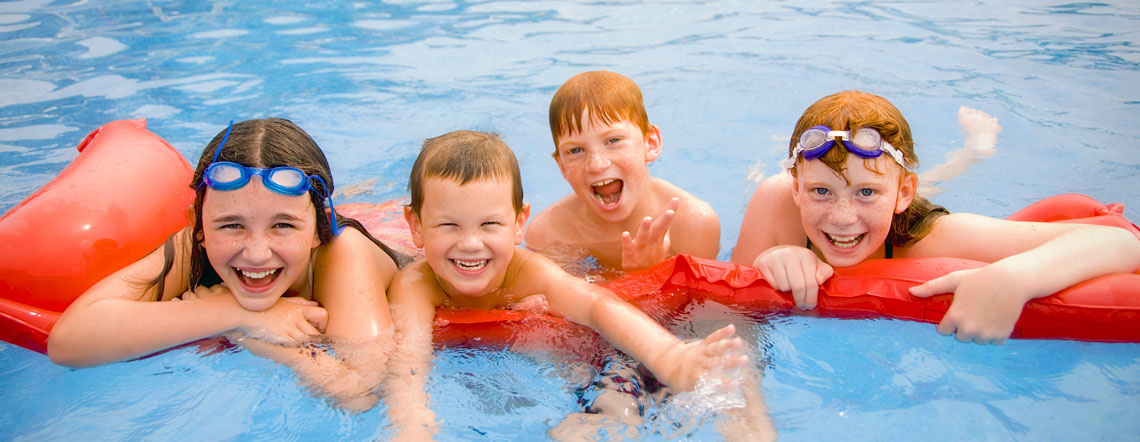Summer is a time for kids to get out and enjoy playing outdoors. Because we live in the south, it is HOT! Many turn to swimming in a pool, at a beach, or the lake to cool off. Because swimming is a big part of summer outdoor activities, we need to think about how we can safeguard our children.
Did you know that drowning is the leading cause of death among children aged 1-4 and a top cause of death among teens? It can happen to any family. Drowning deaths are silent and can can happen fast. Unlike drownings portrayed in movies, there is little splashing or cries for help. It takes as few as twenty seconds to drop below water and less than a minute to drown.
Prevention is the key. One major step with drowning prevention is teaching your children to swim. This is a skill that could save their lives. We know know that children can benefit from and begin with swim lesions as early as 1 year of age. Lessons for children aged 1-4 years will mostly consist of water survival skills. Most children are ready for actual swim lessons by the age of 4. It is important to realize, however, that swim lessons are just on of the many layers of protection to keep your children safe. Regardless of location, even experienced swimmers should never swim alone. Always enforced the buddy system.
The American Academy of Pediatrics (AAP) recommends multiple layers of protection in order to prevent drowning deaths. Depending on the setting, there are various ways to protect your children when near water or swimming.
Backyard Pools
Most drownings in children under the age of 4 occur in backyard pools. Over half of these drownings occur while the child was not supposed to be outside or near the water. If you are planning of spending a lot of time in the pool, or if you are a homeowner with a pool, please take time to safeguard your pool.
- Pool fence: It is best to have a pool fence that is at least 4 feet tall and surrounds the pool on all four sides. Nothing should be near the fence that would allow the child to climb over. The slats should be no more than 4 inches apart. The gate should always be latched. A gate alarm adds an additional layer of safety.
- Designate a water watcher: This person should be free of all distractions and should watch the water at all times. A water watcher should be a responsible teen or a sober adult. It is a good idea to alternate the designated person frequently.
- Make you pool a safe zone at all times: Ensure all pool drains are updated with anti-entrapment drain covers. When watching children in the pool, make sure they do not play near drains. It is also a good idea to tie back long hair and for children to wear properly fitting swimsuits. Additionallly, never leave toys floating in the pool. Children might try to retrieve the toy and and fall in.
- Life jackets: Non-swimmers should always wear a properly fitted life jacket. You should never rely on flotation devices such as a water rings, floaties, or pool noodles. It is a good idea to have life vests available if you own a pool.
- Buddy System: Even experienced swimmers should never swim alone.
Open Water Safety
Children aged 5-17 are more likely to drown in open water such as a lakes, ponds, oceans. Talk to your older children about open water safety.
- Designate a water watcher: As with pool safety, it is imperative that children be supervised while in the water at all times. Young swimmers and inexperienced children should be within arms reach. The water watcher should be free of all distractions.
- Life jackets: Always wear a life jacket when participating in water activities. All persons on a boat should wear a life jacket, including adults. It is best for non-swimmers to wear a life jacket even when around the water, such as playing near the waterfront, while on a dock, or on the beach near the water.
- Teach water survival skills: These skills include such things as jumping in the water feet first. Once submerged in the water, come back to the surface immediately. Learning to float or tread water are also important skills to teach your child.
- Identifying potential hazards: There are different hazards depending on location. Always be aware of hazards such as rip tides, undertow, limited visibility, and depth.
- Only use designated swimming areas: Try to swim in areas where there will be a lifeguard present. Additionally, pay attention to weather warnings and red flags at the beach. There are usually signs posted regarding hazards and lifeguard schedules.
Always safety first! Knowing what to do in an emergency situation is crucial. It could be the difference between life or death.
- Learn first aid and CPR.
- Always have a phone with you in case of an emergency.
- Teach your children how to call 911.
- Recognize warning signs of drowning.
- The person may be quiet.
- They may remain upright in the water.
- Eyes may look glassy or be closed.
- Hair might be covering eyes or forehead.
- The person’s head might be low in the water tilted up.
- Often do not seem in distress.
- Trying to swim in a particular direction, but appear to be getting nowhere.
- Hyperventilating or gasping.
- Appear to be climbing an invisible ladder.
For more information about pool and water safety, visit:
https://www.healthychildren.org/English/safety-prevention/at-play/Pages/Swim-Lessons.aspx
Happy and safe summer to all!
Dr. Cockrell grew up in nearby Natchitoches, LA. She graduated magna cum laude from Northwestern State University with a BS in Biology before pursuing her medical education at Louisiana State University Health Sciences Center in Shreveport. In 2004, she proudly earned her medical degree and was honored with membership in the esteemed Alpha Omega Alpha medical honor society. After completing her medical residency training at LSUHSC while raising her young family, Dr. Cockrell made Shreveport her home. Since 2007, she has been a valued member of Mid City Pediatrics, certified by the American Board of Pediatrics, and is a Fellow of the American Academy of Pediatrics.


